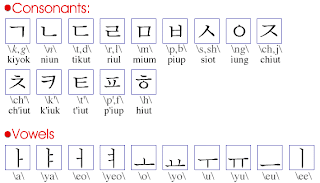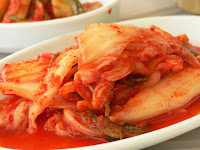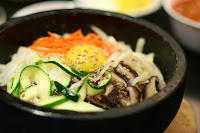HWANGYONG-HAMNIDA :) Welcome to Korea!
In this blog, I am going to talk about the culture of South Korea and a little more in-depth into Seoul. We will discover how tourism had impacted on South Korea and why is it so. Feel free to make a poll :)
Do you learn something from this blog?
Thursday, December 9, 2010
슈퍼주니어 & 소녀시대_SEOUL(서울)_뮤직비디오(MusicVideo)
Brief Introduction
Seoul, the capital of South Korea, is known as ‘Miracle on the Han’. It is the largest city in South Korea, and the fifth largest city in the world. Seoul is one of the heavily populated areas with about 10,421,782 people in 605.2 square kilometres. It is the centralised area for economic, political and culture purposes and also houses famous palaces like the Kyongbokkung, Ch’angdokkung, Ch’anggyonggung and Toksugung.
Culture of South Korea
There are 4 major types of religion in South Korea, namely Christianity (Protestantism & Catholicism), Buddhism, Confucianism and Shamanism.
II. Language
Korean, also known as Hangeul, is the official language written and converse in South Korea. It has 24 characters, consist of 14 consonants and 3 vowels. Syllabuses are formed by combining chosen consonants and vowels to form words. It is the improvised version of Japanese and Chinese because in the past, Korean was written with the fusion of Chinese ideogram and Hangul, a native Korean. It is also similar to Japanese because the language is used in different level of form such as honorific, normal and inferior form when conversing with people of different rank. Turkish and Mongolian are also influential to what the Korean language is now.
III. Traditional culture
Bowing is to show basic respect when you greet someone and send them off.
Korean needs to comply with the Five Relationships which is between the ruler and subject, father and son, husband and wife, old and young, and between friends. Hence, introductions need to take place in order for recognition and respect as Koreans will rank the relationships into category. Koreans take pride in their unique culture; hence, controversial issues about their country should not be questioned as it might seem rude and disrespectful to them.
IV. Social hierarchy
Relationship of Koreans will be automatically ranked according to the status. For example, who is more elder, who has a better income and who had a better education.
V. Family Oriented
According to Confucian say of ‘five generations under one roof’, it is common for parents, children and grandchildren to live together. Confucianism also stress on filial piety and respect for elder and seniority. Thus, the thought of putting elder parents in homes is undesirable and parents will usually live with the eldest son.
VI. Food
Something Korean cuisine cannot miss is the Kimchi, or spicy preserved cabbage. It serves as a staple dish in every meal, even breakfast for Koreans besides rice. A meal in Korea would usually consist of a soup, rice and a few dishes, ranging from three to twelve.
Different kinds of Korean food will be bak and juk (steamed rice and porridge), guk (soup) which is mainly made from soybean paste, jjigae (stew), jjim and jorim (simmered meat or fish), namul (vegetables), jeotal (seafood fermented in salt), gui (broiled or barbeque food), jeon(pan fried food) and mandu (dumplings).
Some of the best dish known are pibimbap (rice served in heated iron bowl, with kimchi, meat and vegetables topped with chilli), pulgogi or called “fire beef” (strips of roasted beef marinated in soy sauce, sesame oil and seeds, garlic, green onions and sugar), kalbi (broiled short ribs which is similar to pulgogi), shinsollo( a combination of meat with mushrooms, seafood, chestnuts, pine nuts and other vegetables in a brass pot), mandu (consist of meat and vegetables wrapped in thin dough crust, steamed or fried like dumplings), yakkwa (a cake made with rice flour and honey), tashik (a cake made of green bean, soya beans, flower pollen, honey and inner bark of pine trees) and also the famous p’atbingsu, a red bean parfait.
In Korea, not only the food must taste nice, the presentation of the food also does their part in evaluating whether the food is good or not. Spoons and chopsticks are also commonly used when dinning.
Different regions of Korea are famous of different kinds of food. Under Seoul, the presentation of food will be flamboyant and consist of grand dishes such as inseollo (food of the mountain god-basically meatballs in chicken soup), gujeolpan (platter of nine delicacies-consist of a variety of meats and vegetables wrapped in thin crepes) and tangpyeongchae (green bean jelly mixed with vegetables and beef). They also enjoy side dishes such as pickled vegetables and salted fish. Having rice with bisque such as seolleongtang (ox bone soup) and gomtang (thick beef bone soup), is also very popular in Seoul.

· Food for festive and season:
Different seasons of the years: spring, summer, fall and winter and festive days such as New Years Day are celebrated with different kind of delicacy in Korea. Even odd number dates that fall into the same numbered month are considered as festive days. Eg. 1st of January, 5thof May and 9thof September. Some special food to be eaten on New Year’s Day will be tteokguk (sliced rice cake soup) for breakfast, which is to wish for happiness, good luck and health, and also eat ogokbap (boiled rice mixed with five grains), dried vegetables and nuts and wish for a thriving year full with energy and robustness.
VII. Costume
The traditional clothes that Koreans wear are called Hanbok. They are usually worn during weddings, funerals or other religious services, and also their 60th birthday. However, some of the people living in rural villages still wear the Hanbok daily.
For men, they need to wear long wide trousers that fit tightly at the waist and coloured bands are worn at the ankles. Short and loose jackets are also worn with a single bow tie. Additional coat could be worn overlapping the jacket and tie on the right side.
For ladies, they used to wear two pair of trousers, one long and the other shorter, but now they wear slips, which was due to the westerners influence. The female dress is always home-made and they need to wear high-pleated full length skirt just under their arms. The skirt is called ch’ima and a jacket is worn called chogori with long sleeves which fastens on a side with a bow.

VIII. Arts
· Martial Arts
One of the world’s famous martial arts, Taekwondo originated from Korea.
· Architecture
In the past, infrastructures in Korea were built by notches by setting wooden beams on stone foundations.
· Pottery
· Sculpture
· Dance
Traditions of South Korea

Koreans consider number 4 as unlucky because when translated to Chinese, Number 4 means dead or death.

Meals time, chopsticks are not allowed to stick vertically on the food because it will be seen as offerings of food to the dead.
In the past, mothers having their first expectancy must go to their mother’s bedroom to deliver the child and recuperate by having seaweed soup with rice. No visitors are allowed into the house for 3 weeks and to indicate the child is a boy, pieces of charcoal and red peppers needs to be hang across the entrance place and if it is a girl, pieces of charcoal and green pine branches are tied to it. The name of the child is usually determined by the head or the eldest family member and after 100 days the baby was born, a big celebration will be held with lots guests being invited.
First night of New Year
It was believed that during the first night of New Year, a ghost will go around and try on people’s shoe. Unfortunately, if it finds a suitable one and like it a lot, it will take the shoes and the owner of the shoe will have bad luck for the rest of the year. Therefore, it is a tradition to keep away the shoes in order not to receive bad luck.
Men & Women
Korean is still a male dominated country, it is the guys; responsibility to work for the living of the family. Women will stay at home and be responsible to the home and their children. Under the Confucius code of conduct “male and female shall not sit close after the age of seven” and intimidate actions between singles of opposite sexes are not allowed. Hence, this policy resulted in strict controls over teenage dating which might even resulted in to waiting till they are 20-30 years old, and then they can date.
Marriage
In the past, marriage was arranged by the elders in the family and need both side of parents’ agreement before the wedding can take place. The parents’ criteria on their future in-laws will be according to the background, job prospect and education level for men, and the ability to fulfill domestic duties of marriages for the women. After marriage, the women does not take over the husband’s family name as in Korean culture, families are based on blood ties and not outsiders. One interesting custom is that when the celebration is coming to an end soon, the groom will be hang upside down by his friends and to be “tortured” by beating the groom’s sole of the feet to demand for bigger feast.
60th Birthday
It is considered as one of the special occasion in one’s lifetime because not many people get to live past the age of 60. It is also known as ‘hwan-gap’ and one will dress in their best, consumed the best cuisine and receives the best well wishes from everyone. The number of guests at the celebration indicates how well received the person is in his society circle.
Funerals
Mourning period for the dead can range from 3 months to 3 years, depending on who intimate the relationship is. Meals will still be served to the dead until they were buried in the ground. The location of burial must be well inspected and chosen by priests and geomancers. A wooden tablet made of chestnut wood for the deceased will be brought home and enshrine in the family shrine.
Indigenous groups
Languages

Mode of Education







